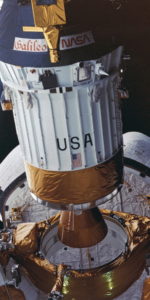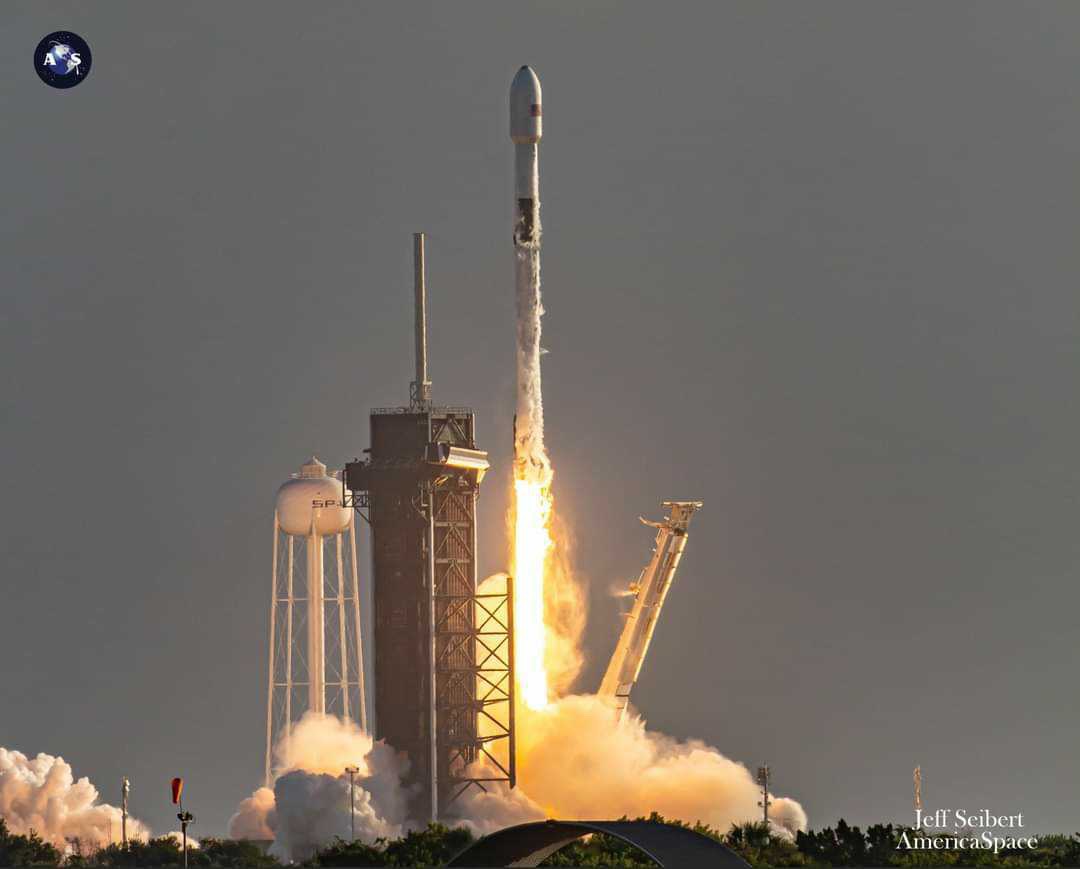
SpaceX has successfully wrapped up its 18th mission of the year, having launched a previously-flown Falcon 9 on a Sunday morning commute from historic Pad 39A at the Kennedy Space Center (KSC) in Florida. Liftoff of the B1051 core—only the second Falcon 9 in history to log a sixth flight and the first to fly as many as four times in a single calendar year—took place at 8:25 a.m. EDT, against perfectly blue Space Coast skies.
A little over an hour later, its payload of 60 flat-packed Starlink internet communications satellites were successfully deployed into low-Earth orbit. With the completion of Sunday’s flight, SpaceX has tied 2020 with 2017 as its second-most-flown year to date. If it should fly four or more launches by New Year’s Eve, the Hawthorne, Calif.-headquartered organization will exceed its all-time personal best of 21 missions achieved at the end of 2018.
In spite of the sad and tragic year that 2020 has been for many of us, SpaceX has maintained a remarkably stable cadence of launches, notwithstanding a number of agonizing technical difficulties along the way. Including this morning’s flight, the 18 missions flown so far have been accomplished with only eight Falcon 9 cores, three of which have logged three launches apiece. And B1051 became the first booster to fly four times in a single calendar year, having delivered four batches of Starlinks aloft in January, April, August and this morning.
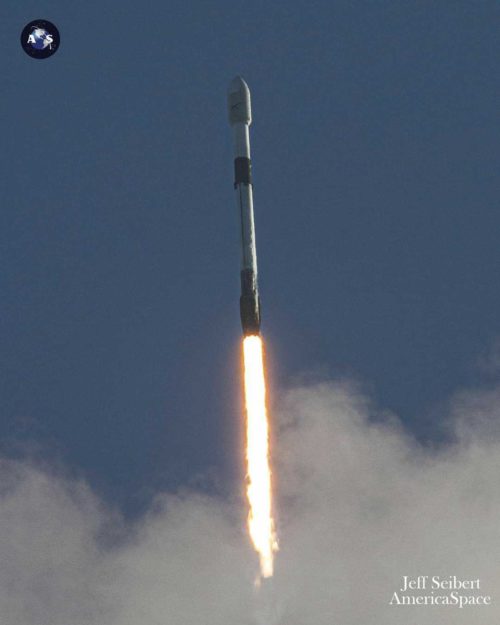
It also undertook two missions in 2019, firstly in March to launch the historic Demo-1 Crew Dragon to the International Space Station (ISS) and secondly in June to loft Canada’s three-satellite Radarsat Constellation Mission (RCM). Together with B1049, which flew most recently in August, only two Falcon 9s have flown as many as six times. Barring any unexpected problems from today’s launch, there is every reason to anticipate a seventh flight from both boosters in the coming months.
As outlined in yesterday’s AmericaSpace article, the weather outlook for Sunday was predicted to be highly favorable, with a 70-percent probability of acceptable conditions at T-0. “By Sunday morning, some low-level moisture will begin to creep back north into the area, but mid-levels are expected to remain warm and dry,” noted the 45th Weather Squadron at Patrick Air Force Base.
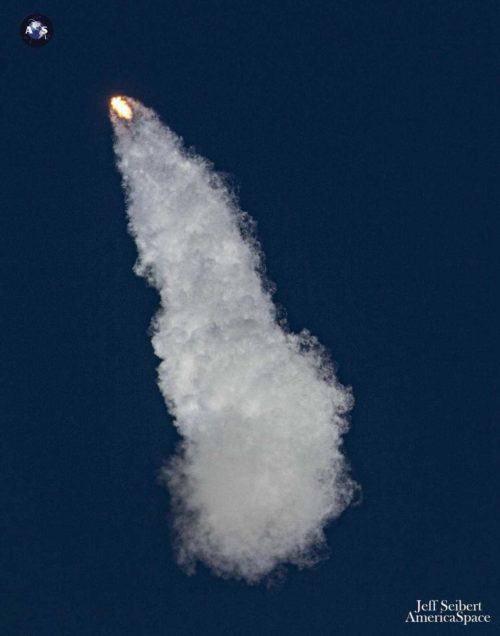
“This, combined with the brisk northeasterly flow, will likely bring low-topped, quick onshore-moving showers from the Atlantic on Sunday morning. While sustained wind speeds are expected to remain under the threshold, they could become briefly elevated in a shower or in gusts.”
In readiness for a Sunday launch, B1051—blackened and scorched from its five previous high-energy launches and re-entries—was trundled horizontally out to Pad 39A on Saturday, mated with a sparkling-new second stage and twice-flown payload fairing “halves”. It was elevated to the vertical and its nine Merlin 1D+ engines were briefly ignited for a Static Fire Test.
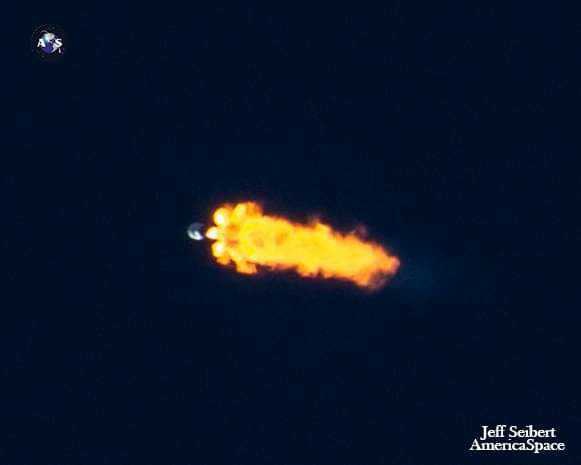
Such tests were for many years a customary feature of all missions, but for the first time in 2020 were not seen on every Starlink flight. But with engine difficulties having hampered the most recent attempt to get a beleaguered Block III Global Positioning System (GPS) navigation and timing satellite airborne for the U.S. Space Force earlier in “Scrubtober”, it seems unsurprising that SpaceX is erring on the side of caution.
Following a smooth 8:25 a.m. EDT liftoff, B1051 powered uphill for the first 2.5 minutes of Sunday’s ascent, providing 1.5 million pounds (680,000 kg) of thrust to get the 230-foot-tall (70-meter) Falcon 9 to the edge of space. It then separated from the stack and commenced its descent back to a pinpoint touchdown on the Autonomous Spaceport Drone Ship (ASDS), “Of Course I Still Love You”, about 390 miles (620 km) offshore in the Atlantic Ocean.
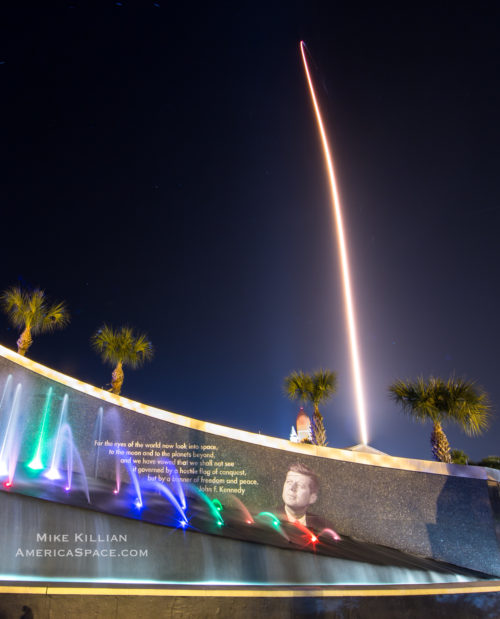
In completing its sixth flight in 19.5 months, B1051 has now executed five ASDS landings and one touchdown on solid ground at Landing Zone (LZ)-4 at Vandenberg Air Force Base, Calif. Among its other accolades, in April 2020 it flew SpaceX’s 84th mission, which allowed the Falcon 9 to formally surpass United Launch Alliance’s (ULA) venerable Atlas V as the most-flown rocket in active operational service in the United States.
But not everything has gone smoothly for B1051 this year. Its fifth mission to deliver 57 Starlinks and the Global-7 and Global-8 “rideshare” passengers for Spaceflight, Inc.’s customer, BlackSky, Inc., suffered no less than three scrubbed launch attempts due to a combination of poor weather and technical issues. This pushed its launch from late June into the middle of July, before it eventually flew in the hours of darkness on 7 August.
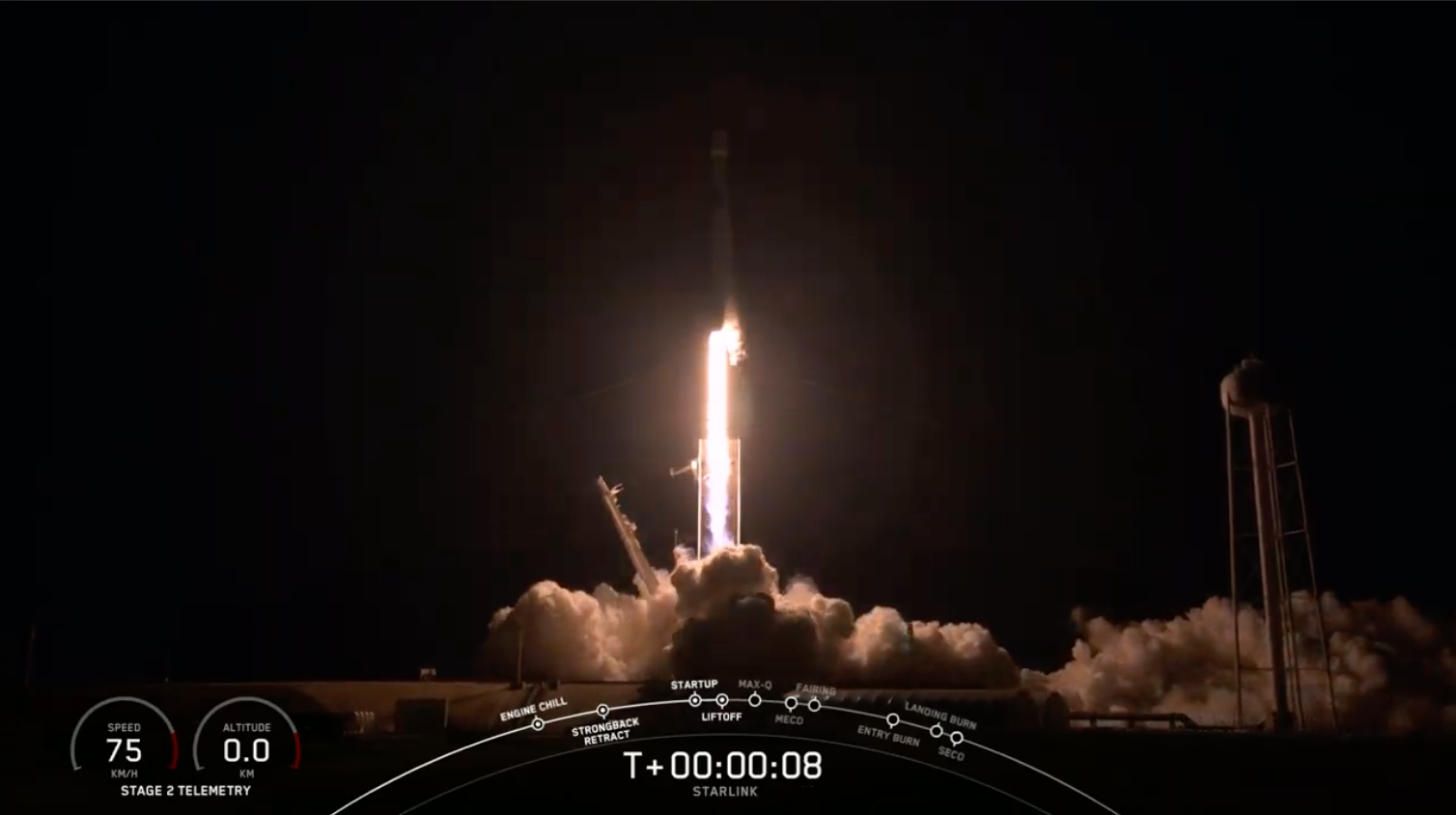
Barely will the dust have settled at Pad 39A than another Falcon 9 will launch at 12:36 p.m. EDT Wednesday from neighboring Space Launch Complex (SLC)-40 at Cape Canaveral Air Force Station. Flying the veteran B1060 core—which previously saw service in June to launch a GPS Block III satellite and early last month flight—will be another batch of Starlinks, bringing the total number of these low-orbiting satellites launched since May 2019 to 893.
And an on-time launch after midday Wednesday will mark out B1060 for two records: just 113 days for the shortest time it has taken a Falcon 9 core to log three missions and only 48 days for the shortest interval between two missions by a single booster.
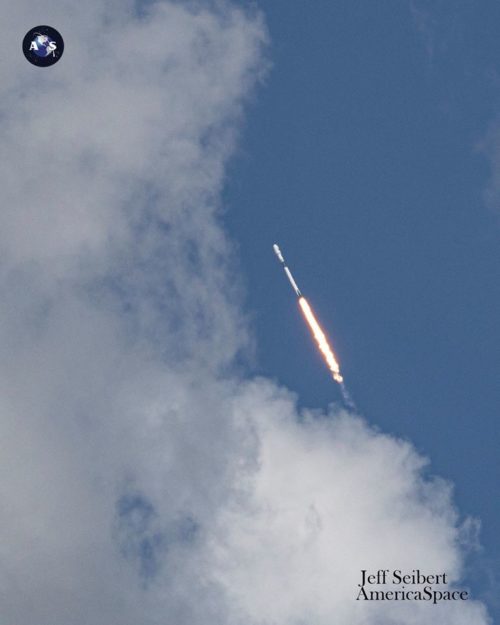
Weather conditions for Wednesday and the backup attempt on Thursday are currently expected to be around 60-percent-favorable, with a risk of violating the Cumulus Cloud Rule and Thick Cloud Rule. “The gradient between high pressure sliding from the Mid-Atlantic coast into the western Atlantic and a stalled frontal boundary just southeast of Florida will bring a breezy and showery pattern that will remain in place across the region through at least mid-week,” the 45th Weather Squadron noted in its Sunday morning L-3 update.
“In general, expect periodic onshore-moving showers with gusty winds to affect the Spaceport. An easterly wave well to the south of the region will shift the old boundary back across the state by mid-week, bringing enhanced moisture, cloud cover and instability with a period of higher shower coverage. The primary weather concerns…will be Cumulus Clouds associated with Atlantic showers, as well as Thick Clouds associated with the enhanced moisture.”




